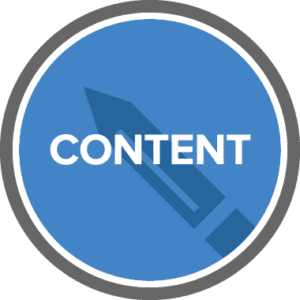15 Powerful SEO Tips to Grow Your Brand and Online Presence in 2021
By Mike Cynar
Improve the organic traffic to your website, build a stronger online presence, and craft a memorable brand by exploring our curation of SEO tips for 2021.

What search engine optimization tips will help grow your brand and online presence?
Last year, 68% of all online experiences started with a search engine. Google Search, Image, and Maps accounted for 92% of all Internet traffic. Organic traffic SEO techniques lead to a 14.6% close-rate.
Yet over ninety percent of all sites received no organic visitors from Google.
This article offers 15 powerful SEO tips to help boost your business brand over the next twelve months.
We explore SEO strategies like optimizing inbound and internal links. You’ll see how long-form content can increase your ranking position. And how technical SEO tactics will improve your website’s visitor count.
Read on to discover how to grow your brand online using these powerful SEO techniques.
1. Conduct an SEO Site Audit
At Peak Marketing Service, the first thing we do to increase organic traffic is to conduct an SEO site audit.
This deep-dive analysis examines every aspect of a website in relation to search engine performance. That includes:
- current placement on Google for target keywords
- number of quality inbound links
- reviewing SEO factors like meta information
- if the site’s received any penalties
- technical errors or problems
The audit creates a firm foundation on which to build SEO strategies that best fulfill the site’s requirements.
For example, if there are no inbound links then the goal is to create a network of high-value backlinks. If there’s an issue with site rendering then this needs to be fixed asap.
One important aspect of SEO auditing is to conduct it for multiple platforms and devices.
As Google uses a ‘mobile-first’ approach, the audit must review the site on a phone and tablet. It must also cover desktop users to ensure all audiences are catered for on PC, Mac, and Linux, and different browsers.
2. Increase Organic Traffic With Content Updates
If your site has lots of pages filled with great content it’s time to reoptimize them to attract new visitors.
Content re-optimization is the fastest way to increase traffic and improve rankings. That simply means adding fresh information to those pages and editing them to promote it.

What does that mean on a practical level?
If you’re targeting new keywords make sure to include them in your existing pages. Reorganize the content and ensure the new copy gets placed near the top. Add dates to your text, for example, ‘Updated March 1st, 2021’.
Google’s search bots will spot the updates and factor them into their calculations. As it’s fresh, useful content, you should see an upswing in organic traffic.
3. Review of Internal Linking
Part of the audit is to review every internal link within your site. The reason? Because internal link building can greatly improve your ranking.
Google sees internal links as a map for visitors to find their way around your website. If they’re missing or don’t work then visitors will become frustrated and leave.
Check every link and evaluate its purpose, structure, and the anchor text it links from. Ensure that text relates to the linked page in some way and can’t be interpreted as spam. Google’s link report tool can help you with this but double-check everything regardless.
One other useful tip is to moderate the number of links on each page.
If you see a pattern of internal links to your about us page every time your company’s mentioned then that’s overkill. Remove unnecessary links to make the remainder mean something.
4. Keyword Rich Breadcrumbs
A breadcrumb trail helps organize the content on your site and helps visitors discover your pages more easily.
An example breadcrumb for an e-commerce product page could be Mobile Phones > Samsung > Galaxy Range.
Each element should offer a link to that category or group of pages. Yet many site owners fail to realize that those words will boost SEO if optimized correctly.
Add your target keywords as breadcrumb links.
Google will relate these phrases to the pages they link to and may even build a pattern of sub-links in its own results. As the breadcrumbs appear at the top of the page, that makes them even more important.
But be careful to not overstuff your keywords or you could get penalized for spamming.
5. FAQ Structured Data
Structured data allows you to submit your pages in a format that Google can easily read and review. And one of the formats that can help your rankings and better engage visitors is the FAQ.
Frequently Asked Questions or FAQs offer a list of questions and answers that bypass the need for back-and-forth chat. Customers can see their queries answered immediately which improves the online purchasing process.
Google recognizes the importance of FAQs and their structured data markup reflects that.
Submit your FAQs in the correct way to instantly feed them to Google Seach. You can validate the results online. Then use the URL validation tool to see how Google views your links.
6. Focus on Core Web Vitals
Imagine you’re Google.
How do you determine the quality of a page? Why should it be ranked higher than its competitor? How do you measure how good it is?
Core Web Vitals is a way to evaluate quality in relation to a great user experience. And it will form the basis of Google Search moving forward into 2021 and beyond.
The concept uses three metrics:
- Largest Contentful Paint (LCP) or loading performance
- First Input Delay (FID) or time until the page is interactive
- Cumulative Layout Shift (CLS) or time until the page becomes stable
These quality evaluators are quantifiable. In other words, Google can now measure your pages using an overall percentage figure.
Core Web Vitals demands a full review of your site, especially its loading speed and user experience (UX). If it doesn’t work well on a mobile device expect to lose business.
7. Optimize Favicons
Look to the top of the screen.
See the small image on the browser tab? That’s a favicon. But what’s that got to do with our search engine optimization tips?
A favicon image that’s high contrast against a white background can influence your click-through rate.
Google’s currently rolling out a new layout of its search results that include the site’s favicon next to the page link. If you don’t have a favicon or it doesn’t work on white then beware.
Evaluate your favicons and make sure they contrast well on a bright page and browser tabs.
8. Limit Sitemap URLs
Every website should include a sitemap file to assist Google to crawl its pages.
If you don’t have a sitemap then learn more about the subject on Google’s help section. And if you’ve got a large sitemap with thousands of links it’s time to reevaluate things.
The maximum number of links allowed in a sitemap file is 50,000. However, try bringing that volume down to 10,000.
Why? Google needs to prioritize its resources. If it sees a concentrated volume of URLs that are one-fifth of the capacity it will deem them more ‘important’. It will crawl these links more often than a larger spread.
Also, try to employ dynamic sitemaps.
These auto-generate your links for Google to review. You can flag pages that you want to promote in this way and push less relevant pages to the bottom of the list.
9. Improve Header SEO Tactics
We’ve known for a long time that Google factors header tags like <h1> into its ranking algorithm. But how important are ‘lesser’ headers like <h2> to <h6>?
Our team’s witnessed keyword-driven sub-headers appear as featured snippets in Google Search.
Using <h1> as the main heading, break-up content with smaller header tags. Be sure to add your targeted keywords where appropriate.
The process adds context to your content and will help your visitors digest the information on the page.
10. Review Your Title Tags
One of the easiest SEO techniques to increase your ranking is to optimize your pages’ titles.
Open your home page and view its source. Search for the <title> tag. The content within this element is a crucial piece of the SEO puzzle so note it down.
Next, Google your website name. If it doesn’t appear enter site:www.yoursite.com and replace it with your URL. You’ll notice that the link text Google uses should replicate your <title>.
Every title tag should include a rich keyword phrase that relates to the content on that page.
It acts as a marketing message to potential visitors so it needs to read well and remain attractive. It should fit within 60 characters and include your brand if possible. Watch out for spelling mistakes!
If your titles are optimized already consider editing their ‘boilerplate’ endings.
That’s often your business name added after the keyword phrase. Change it slightly to freshen things up. Google will see the changes and might elevate your position.
11. Meta Description Optimisation
Below your <title> tag should be your <meta type=”description”> yet many site owners ignore this element. They either forget to add it, don’t see it as important, or think Google ignores metadata.
Actually, Google doesn’t factor meta tags into its search decision.
However, look again at a search result. Beneath the title/link is a few lines of information. That’s often taken from your meta description.
Like your title tag, make sure to include appropriate keywords in your meta tags. Keep the text within 160 characters. Make it readable, informative, and add a call to action.
The goal is to prompt visitors to click on your link so compose an appealing message to encourage them.
12. Create Long-Form Content
Although content length isn’t a ranking factor, long-form content will earn you more links and shares.
Writing a blog article of more than 1,000 words not only provides great content to your site but helps with SEO. Other websites will cite your pages if they offer authority and provide quality content for their visitors. Those visitors then become your visitors who will browse your other offerings if they stay.
These backlinks form a critical part of Google’s search formula which in turn will boost your rankings.
If you haven’t the time or experience to write in this way look at our Peak Content packages.
We can produce quality content for your blogs no matter your industry. Everything’s optimized for search engines and includes an image for a professional presentation.
13. Launch Grouped Content Together
Don’t add your long-form content pieces one at a time. Instead, launch them in groups and be sure to link them together.
Google will discover this treasure trove of authoritative work and will mark you as a quality provider. That means the next time you add articles to your blog you’ll already have the advantage.
Remember, Google wants to give its users the best experience possible.
If it sees evidence that your site produces relevant information that works together as a solid unit you’ll reap the rewards. Launch your articles in topic clusters to get the most out of them.
14. Don’t Hide Your Content
Do you use tabs to reveal hidden content to your visitors?
Don’t. Google doesn’t like it and neither do your users.
Bring content out of accordion navigation elements and dropdowns and into the main body of the text. Make it visible and easy to read.
Google may determine that hiding your information is an attempt at spamming the system. Spammers don’t sit well with the search engine giant.
And even if it isn’t spamming you want to promote your hard work, not hide it away.
15. Smart Link Building SEO Strategies
Building quality backlinks will remain a key focus in 2021. To help your inbound link-building SEO strategies here are some tips:
- create great content to receive passive inbound links
- reach out for backlinks fore only those pages you deem important
- don’t ask for links on massive directories where you’ll get lost in the shuffle
You can use free tools such as Link Explorer to review your existing backlinks.
Then put aside a lot of time and effort to build those links. You’ll reap the benefits in the long-term.
Expert SEO Tips with the SEO Experts
This article’s highlighted fifteen SEO tips that will help grow your brand and online presence in 2021.
From reviewing and rebuilding your internal links to writing fresh content, they can only improve your Google ranking. But not all businesses have the time or skill to do this themselves.
They need a team who can implement these search engine optimization tips. A company of SEO experts that will manage the process and increase targeted visitor counts.
Peak Marketing Service, LLC is a team of digital marketing experts that delivers a system that works.
Our SEO packages include a full website audit and keyword analysis. From there we’ll identify how to bring in more organic traffic from Google Search.
You can track your site’s progress using our monthly monitoring tools. And you can avail yourself of our specialist SEO tactics including guest posts and content syndication.
Achieve SEO peak performance by contacting us today.




Comments are closed.